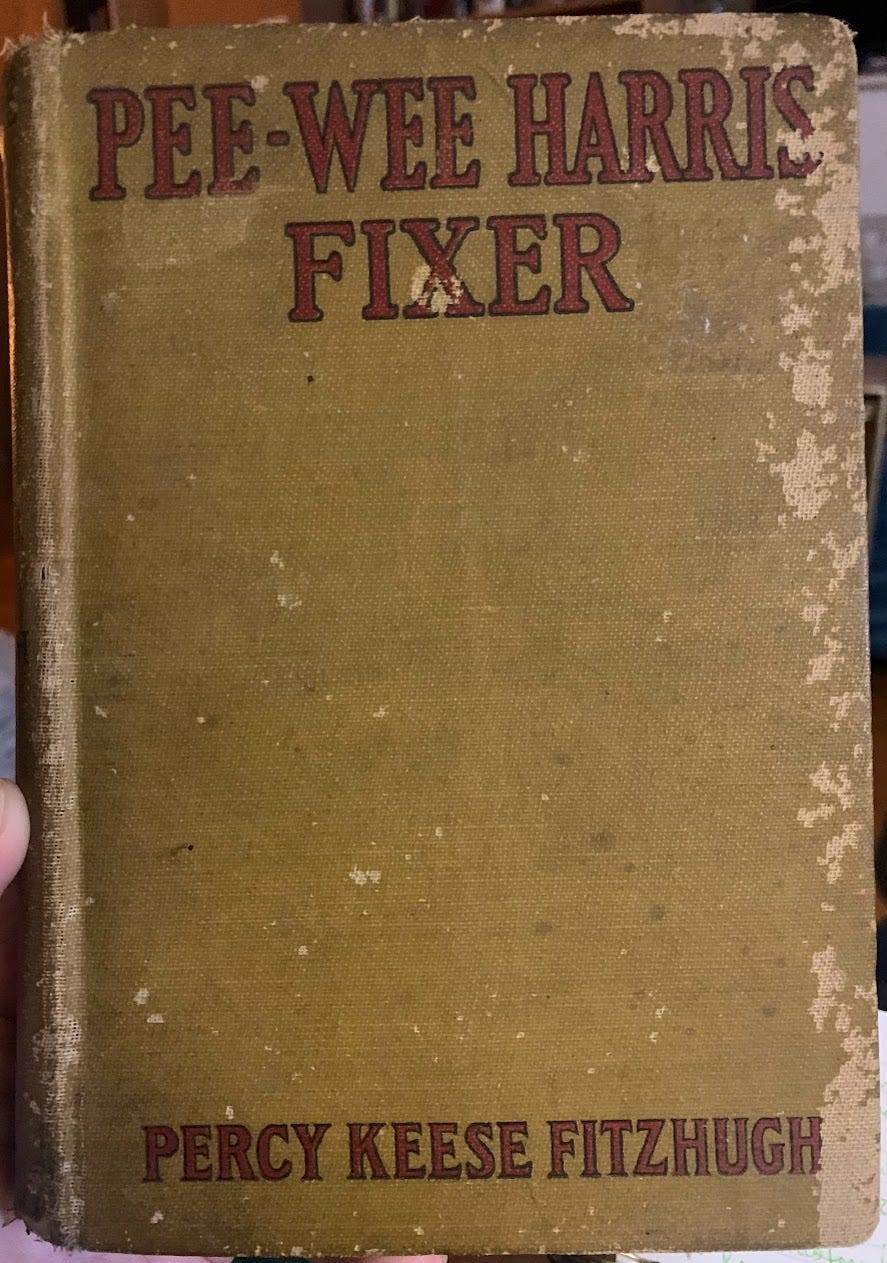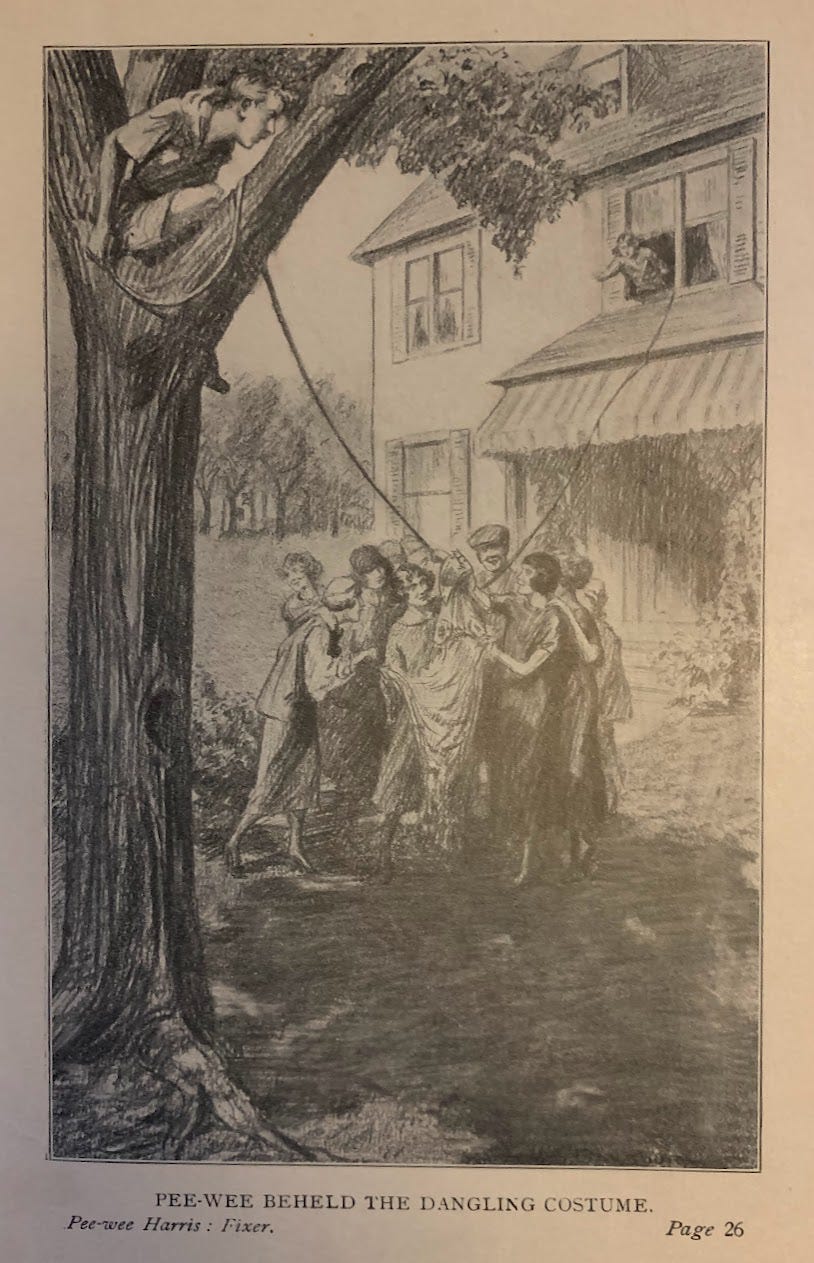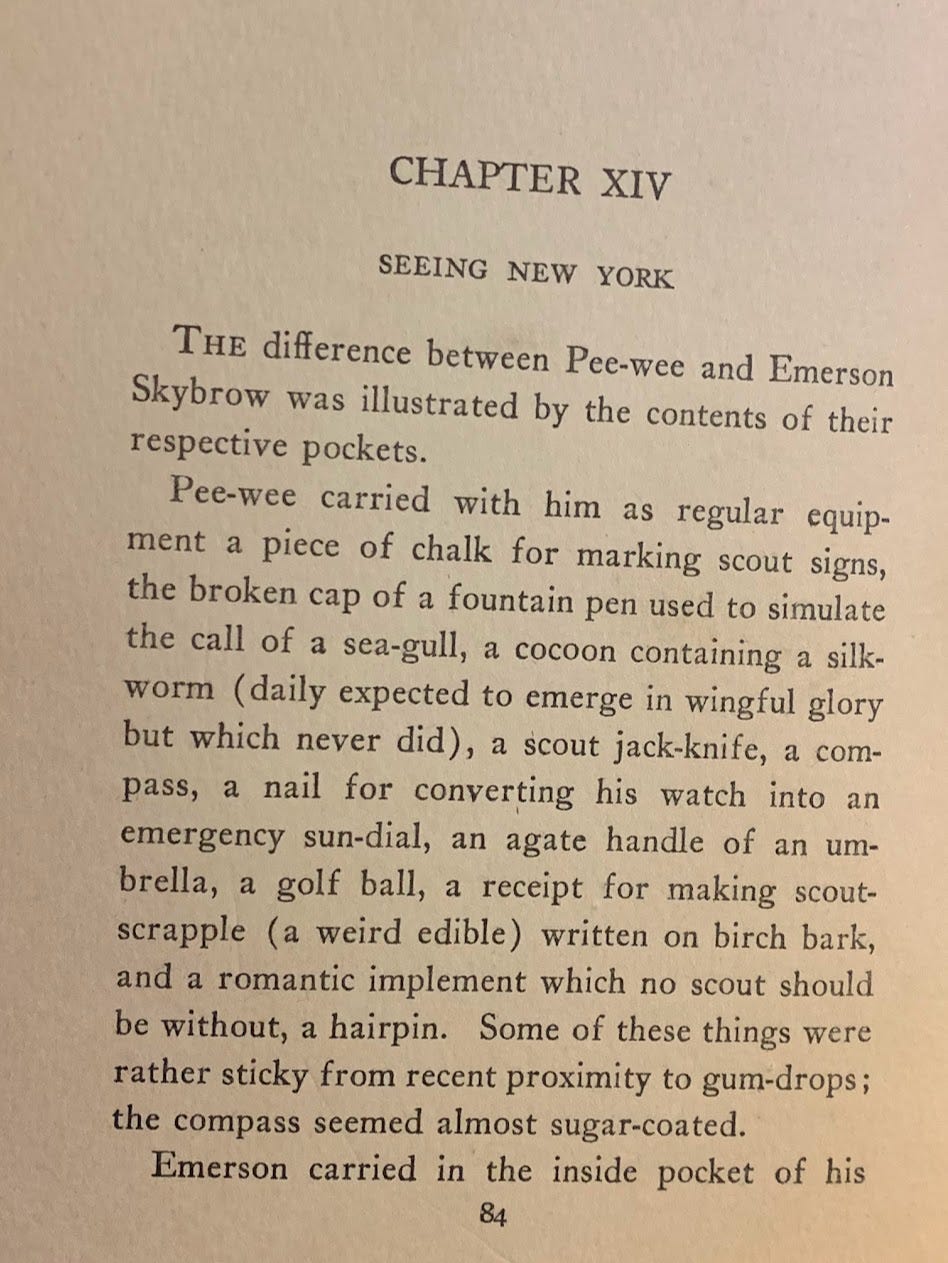I decided a while back that in order to get myself into the right headspace for editing children’s books in my role at Raconteur Press, I should read books like the ones we want to see coming in from authors.
Given that I’m a quick reader, and juvenile novels (also now referred to as Middle-grade [MG] or young adult [YA] in the industry) tend to be on the shorter side, I figured I could do quite a few of them. I had underestimated the time I had available. Still, this is an important task. I won’t review all of them that I read, and they won’t all be antiques, but I do plan to make this a regular Friday feature for some time to come. For one thing, it’s fun!
Pee-wee Harris: Fixer
by Percy Keese Fitzhugh
c. 1924 (if you would like to enjoy this book for yourself, it is available free at Project Gutenberg)
This book is associated with the Boy Scouts of America, in an era when that organization was trustworthy and an invaluable part of many boy’s lives in giving them skills, and shaping them into competent young men. It is a central part of the book, and being accepted as a scout is something Pee-wee is justifiably proud of.
The first few pages of the book do a superlative job of introducing Pee-wee, and his family. It is an excellent study in characterization, portraying Pee-wee as the highly determined and persistent agent of chaos that he will be developed fully into through the course of the book. The term ‘fixer’ will be used lovingly and sarcastically for him as the story unfolds. His long-suffering mother, who loves her children, is limned as through the eyes of a child, and his older sister similarly. Pee-wee’s intentions are good, as he wants to set up a radio aerial, but he doesn’t always stop to think, or to ensure that he isn’t leaving random grappling hooks trailing in his wake…
I found myself smiling and occasionally chuckling over the young character, who seems to be around ten years old, as he does his best. Catastrophes seem to follow Pee-wee (whose name is actually Walter, but only his parents call him that) wherever he goes. Pee-wee rarely notices, being too wrapped up in enjoying his own schemes and importance. He is appointed to the safety patrol for the school, and everyone gets to school safely, but the rag-man and the circus parade go very wrong! He has spent all of his money on the radio aerial, and can’t go to the circus, but a chance encounter with a boy no-one is friends with gets him an invitation to the exhibition… of medieval art. In New York City.
There is a stark difference between the children portrayed in this book, and the children of the modern era. Two boys who casually journey across state lines to see the museum, and the sights, in the big city? Completely alone? And on their way home, are swept up into a search and rescue for a little girl? Remember, I’m talking about boys ranging in age here from ten to perhaps sixteen. I think it’s wonderful. I think it’s an era we’ve lost and are the poorer for it.
Pee-wee, by the way, isn’t the hero of this book. He’s simply the motive force and comic relief. The real hero is the outcast, Emerson Skybrow (yes, the names are silly!) who loves school and speaks almost a different language and doesn’t understand what the barrier is between him and the rough-and-tumble Scouts. Emerson, through deductive reasoning, does find the little girl, and there is a wonderful sequence of him ultimately rescuing her from the half-drowned state she is in, and managing to get her out of the cellar of a ruined house. He has proven himself worth being a Scout, and is promptly invited to join the boys.
After a final, silly sequence of disaster, the book ends. It is part of a much larger series, so some characters you’re expected to know, but it stood alone quite well. The language used in writing it isn’t dumbed down at all, and it also would still work for the modern young reader, I think, although some of the slang and expressions are dated. Despite being in it’s centennial, the story is fun and expressive of young boys anywhere, I think. Having been the mother of one! There is a gentle moral, lurking under the story almost unseen, about not ostracizing those who are different from you. The author invites you to laugh at Pee-wee’s antics without mocking his young hero. It is a refreshing read.
I’m looking forward to next week! I’d also like to extend a hearty thanks to John Hollowell for sending me this and quite a few other books which are wonderful examples of boy’s fiction. I shall be reading more for these reviews, and they are joining the shelves full of my collection of children’s classics. My house is becoming a very specific library for the writing community here in Tiny Town, and it will be very interesting to see what we at Raconteur Press can do towards facilitating boy’s books for the modern child without losing the flavor of these wonderful old books.









I recommend Booth Tarkington, who wrote PENROD. A similar aged boy with similar propensities. I remember, in 6th grade, my male teacher reading it to the class and almost falling out of his chair laughing.
In *Swallows And Amazons*, five children go out to camp on an island for the summer. One of them can't even swim. Their mother makes sure that they have an adult contact at least once a day.
No wonder fantasy is increasing in juvenile fiction. Anything to give the kids an adventure.